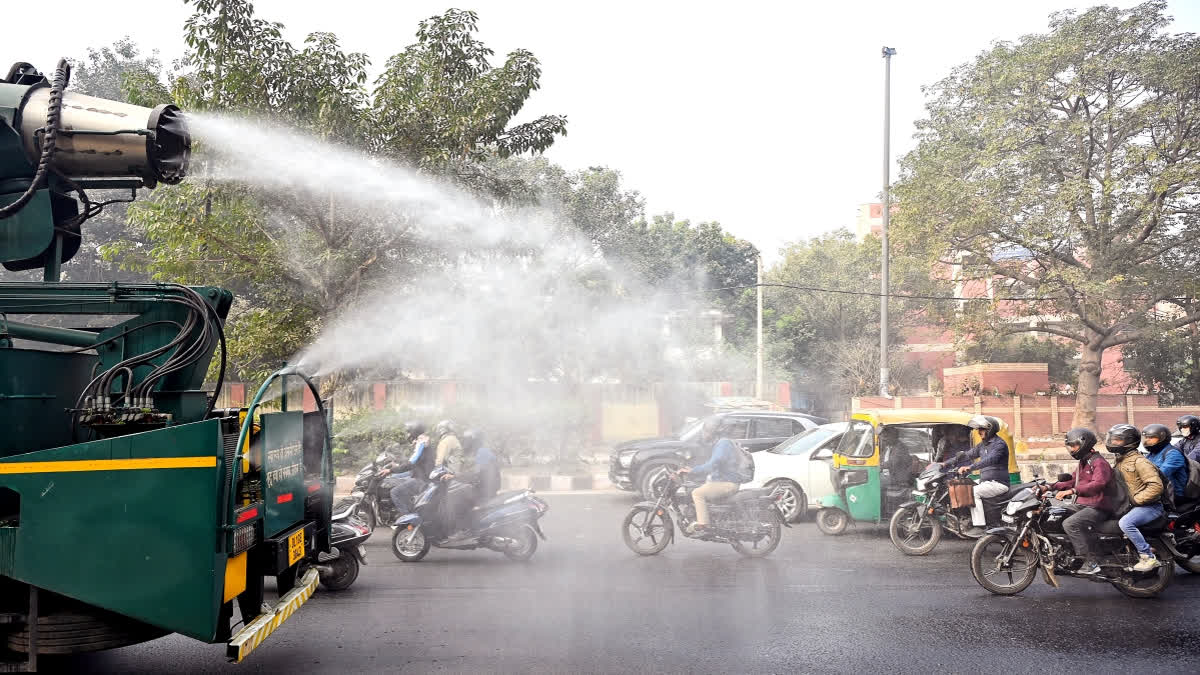New Delhi: The air quality in the national capital remained entrenched in the “very poor” category on Tuesday, with experts cautioning a potential shift to “severe” levels within the next 24 hours due to changing wind patterns.
As winter tightens its grip on Delhi NCR, residents face escalating concerns over the city’s environmental health and its impact on public well-being. The Central Pollution Control Board (CPCB) reported that Delhi’s Air Quality Index (AQI) stood at 343 on Tuesday at 4 PM, slightly better than Monday’s 349 but still firmly in the "very poor" range.
By Wednesday, the AQI was recorded at 302, offering minimal relief. Experts warn that with wind speeds expected to drop further, the AQI could soon breach the “severe” threshold.
Climate expert SN Mishra emphasised the urgent need for environmental stewardship, stating, “The five great elements of nature will protect you if you protect them. A seed carried by the wind eventually finds its ground, transforming into a mighty tree.”
Despite such calls for action, construction activity in a few areas continues unabated, with environmentalist Vimlendu Jha highlighting violations of pollution control measures. "Full-fledged construction was ongoing in DLF Phase 1 despite the GRAP IV ban. When informed, DLF staff dismissed concerns, saying, 'Do whatever you want; no ban applies to DLF.'"
Alarming Pollution Levels: Tuesday morning saw 18 of Delhi’s 39 air quality-monitoring stations recording AQI levels above 400, categorised as “severe.”
Anand Vihar, Mundka, Rohini, and Vivek Vihar were among the worst-hit areas, with AQI levels ranging between 420 and 443. PM2.5, the primary pollutant, reached dangerous levels of 143 µg/m³ by afternoon, with PM10 concentrations at 325 µg/m³.
These fine particulate pollutants are particularly hazardous, posing severe risks to respiratory and cardiovascular health. Though Monday morning offered a fleeting respite with AQI levels dipping below 300 in some areas like Lodhi Road, conditions rapidly deteriorated by evening.
The AQI surged to 377 by 7 PM, as stagnant wind patterns trapped pollutants close to the ground. The number of stations reporting "severe" air quality climbed from seven to 14 within hours.
Key Pollutants and Global Context: Vehicular emissions remain the largest contributor to Delhi’s pollution, accounting for 22.2 per cent of the city’s particulate levels, according to the Centre’s Decision Support System (DSS).
Other contributors include crop stubble burning (6.9 per cent), dust, industrial emissions, and seasonal fireworks. Despite stringent regulations, enforcement remains lax, exacerbating the crisis.
Globally, India’s cities continue to rank among the most polluted. The 2023 IQAir World Air Quality Report ranked Delhi as the third most polluted city, behind Begusarai and Guwahati. In stark contrast, Zurich, Helsinki, and Copenhagen were named the cleanest cities globally, thanks to robust environmental policies and green initiatives.
With winter well underway, Delhi’s air quality crisis underscores the urgent need for collective action. Experts urge residents to minimise outdoor activities, invest in air purifiers, and support policies aimed at reducing emissions.
Stricter enforcement of construction bans, improved public transportation, and sustainable agricultural practices are critical to addressing the root causes of pollution.
As Delhi faces months of toxic air, the health of millions hangs in the balance. The situation serves as a stark reminder of the need for proactive measures to combat pollution and protect public health. Without significant intervention, the capital’s air quality may deteriorate further, posing even greater challenges for residents and policymakers alike.
Read More:



